The community hall in Kenmynsaw village in the Mawsynram subdivision of East Khasi Hills district in Meghalaya, has become a bustling hub of activity. It's not a wedding, play, or movie screening that has drawn the residents out of their homes and fields, but a monthly outreach health clinic organized by the state government.
As the news of the arrival of the health workforce from Mawsynram Community Health Centre (CHC) spreads, the hall, capable of accommodating nearly half of Kenmynsaw's population of 1389, quickly fills up. The CHC team brings medicines, vaccines and monitoring devices to provide free essential health services to the community close to where they live.
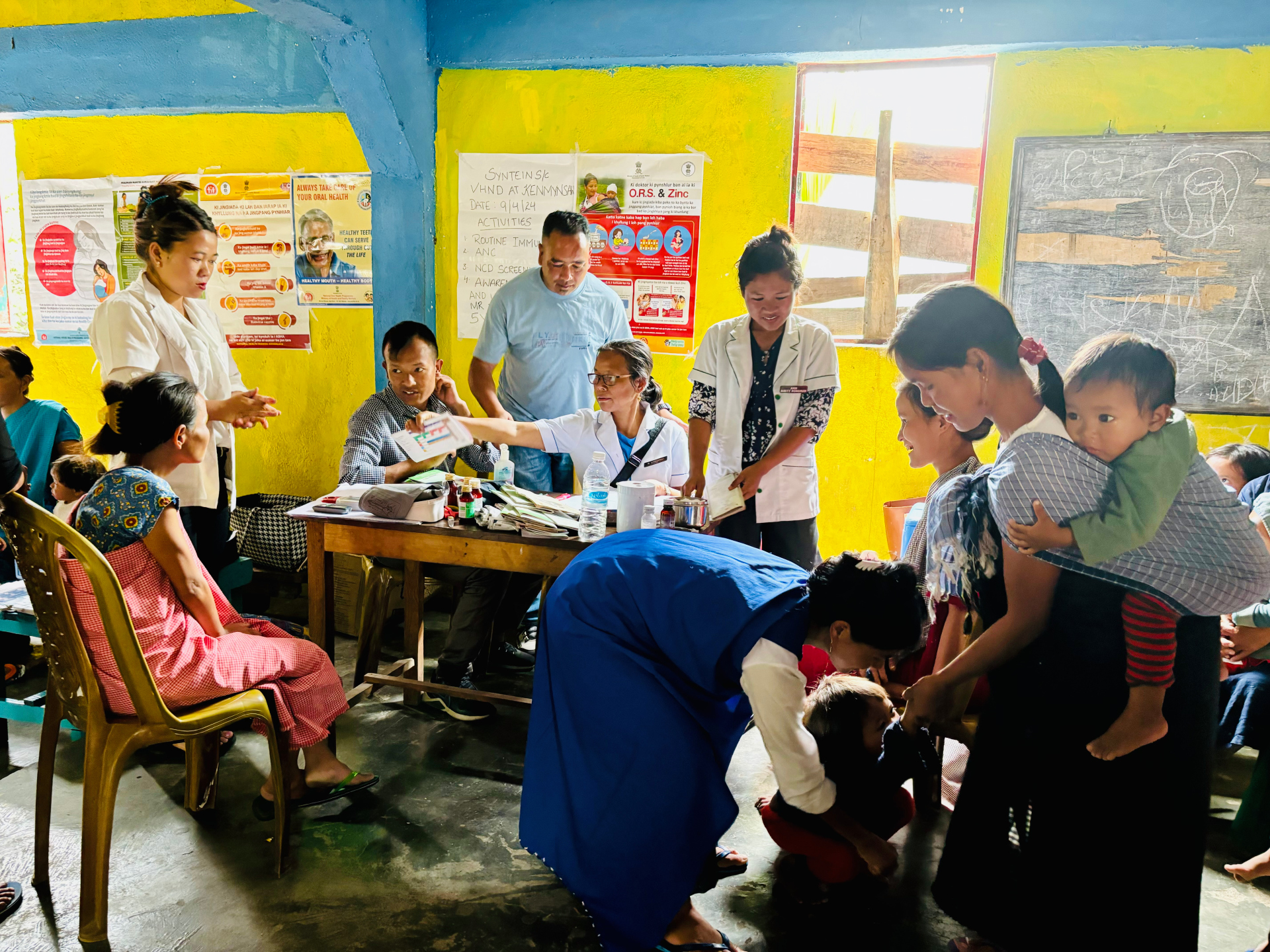
Kenmynsaw Community Hall rapidly fills up with patients as the news of the arrival of the health team spreads through the village (Photo: Sanchita Sharma / © WHO India)
Mawsynram is the wettest place on Earth, receiving an astounding 11,872 mm of average annual rainfall. This incessant rain, particularly intense during the wet season from May to October, isolates communities in this subtropical hilly region for extended periods. In such conditions, health outreach clinics providing health services become a crucial lifeline for communities.
“Mawsynram CHC organizes monthly outreach sessions in each of the five villages in this hard-to-reach cluster, with an additional session at Domskong Sub Centre. Though these villages are in a radius of 5 km of the CHC, the terrain makes travel slow. Reaching each session clinic site involves driving and hiking, which takes us one to two hours on way, depending on the rain,” said Dr R. Suchiang, medical officer, Mawsynram CHC, who is leading the health team.
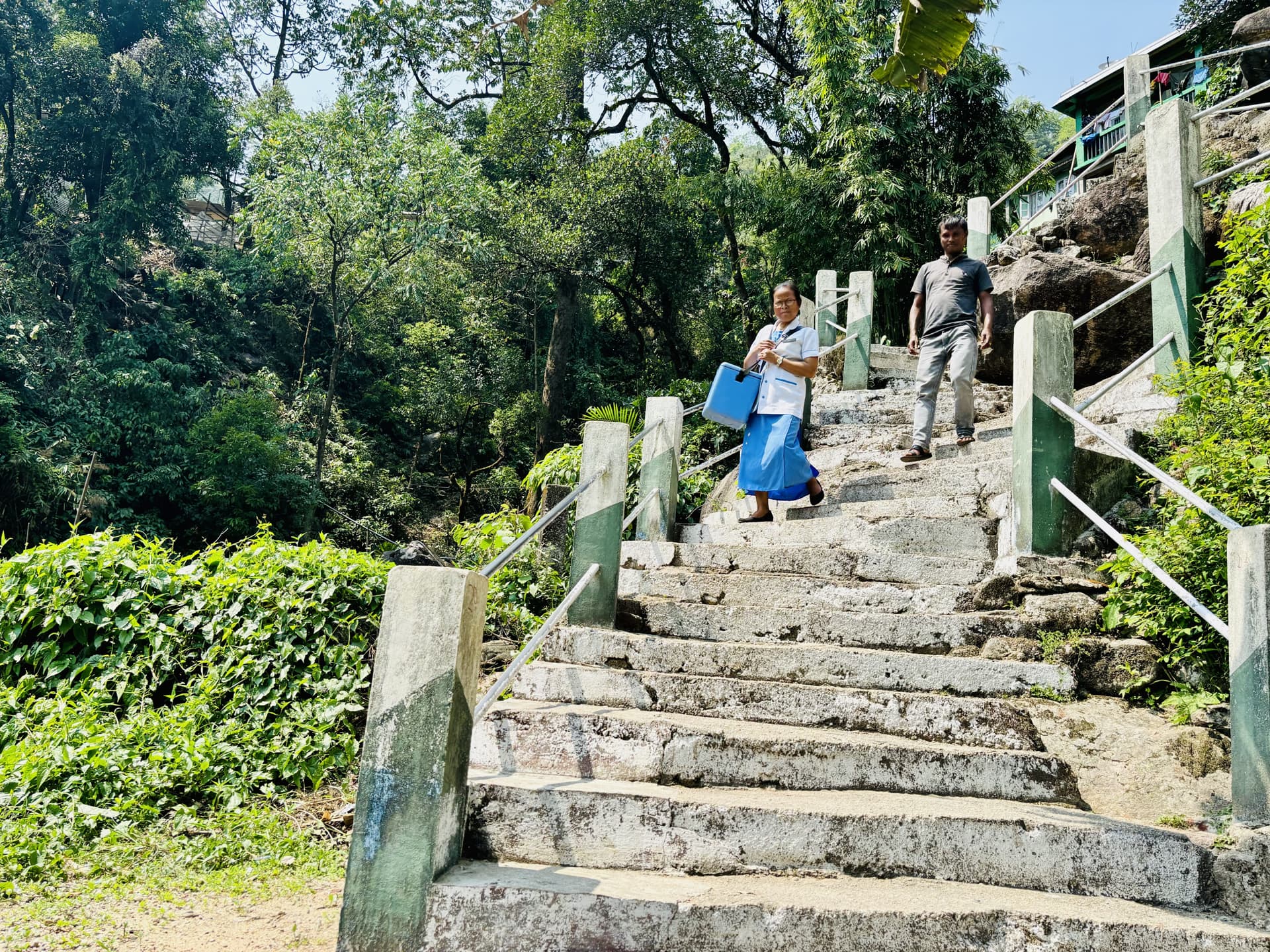
The health workforce from Mawsynram Community Health Centre carry vaccines and medicines over multiple stairs and bridges to reach Kenmynsaw Community Hall (Photo: Sanchita Sharma / © WHO India)
The journey to Kenmynsaw village is particularly challenging due to the sharply inclined road leading to the village. This terrain forces the CHC workforce to abandon their cars 3 km from the village and switch to small taxis driven by community members adept at navigating the steep, winding roads. “I drive with one foot pressing the brake. That’s the only way to drive here, I have to change the car’s brake pads every two weeks,” said cab driver Mr B. Konsang.
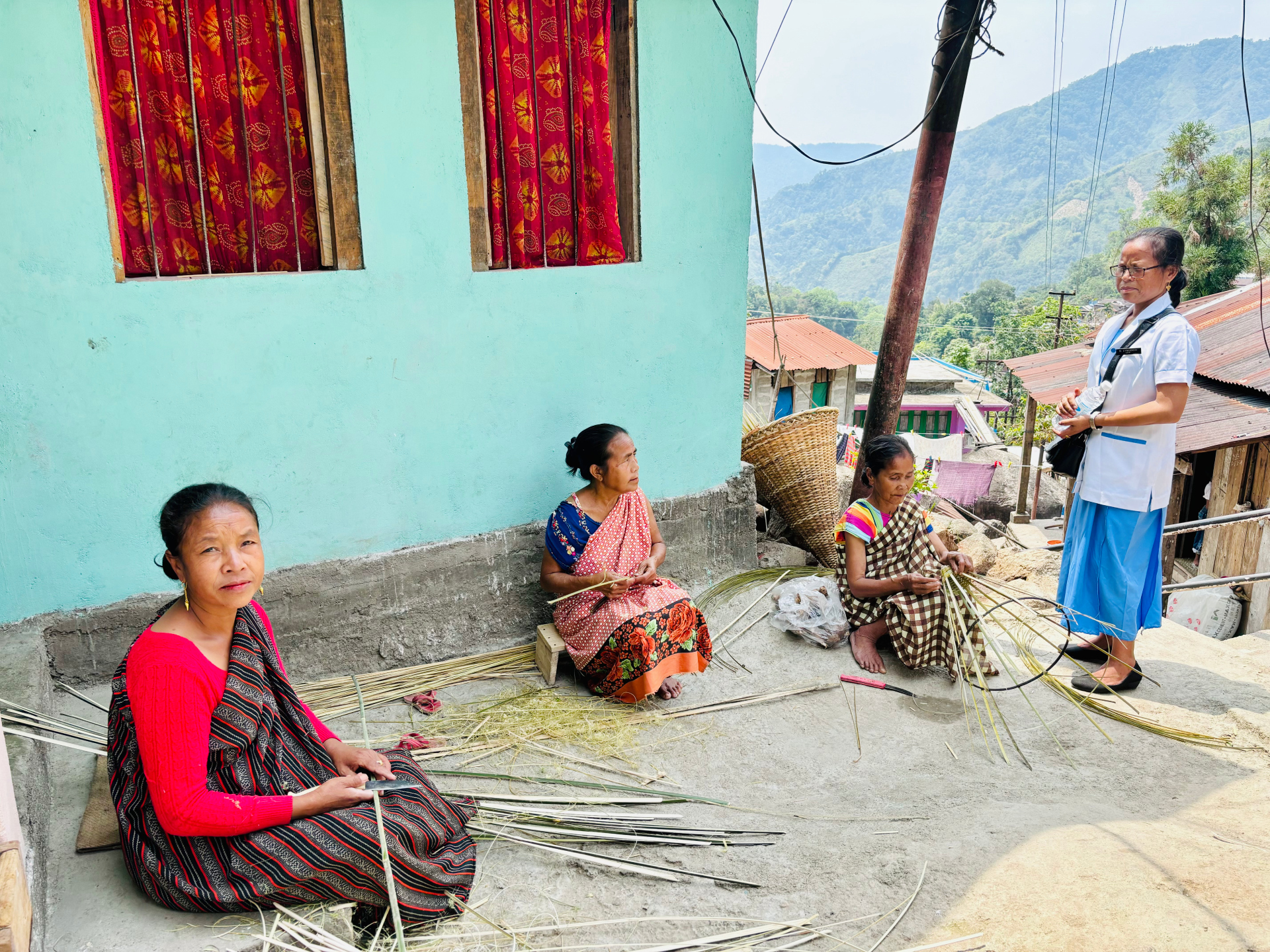
Ms B. Lyngdow, lady health assistant, Mawsynram Community Health Centre, stops to talk with women weaving baskets outside their home using locally-produced bamboo (Photo: Sanchita Sharma / © WHO India)
The final stretch to the community hall is up a few hundred steps that wind through the village. Along this path, families can be seen sitting together, engaging in their primary cottage industry: weaving baskets and making brooms from locally-produced bamboo. Most villagers have small farm holdings, where they grow areca nut palms, jackfruit, black pepper, betel leaf, broom grass, and bamboo.
The Khasi people inhabiting Kenmynsaw village are among the world’s handful of matrilineal societies, where property and wealth are inherited by women. Mr Bah Hoping lives with his wife and children in his mother-in-law’s home, and helps the women make baskets “Everyone in our family works with bamboo, including my mother-in-law, my wife, her sister, and me.”
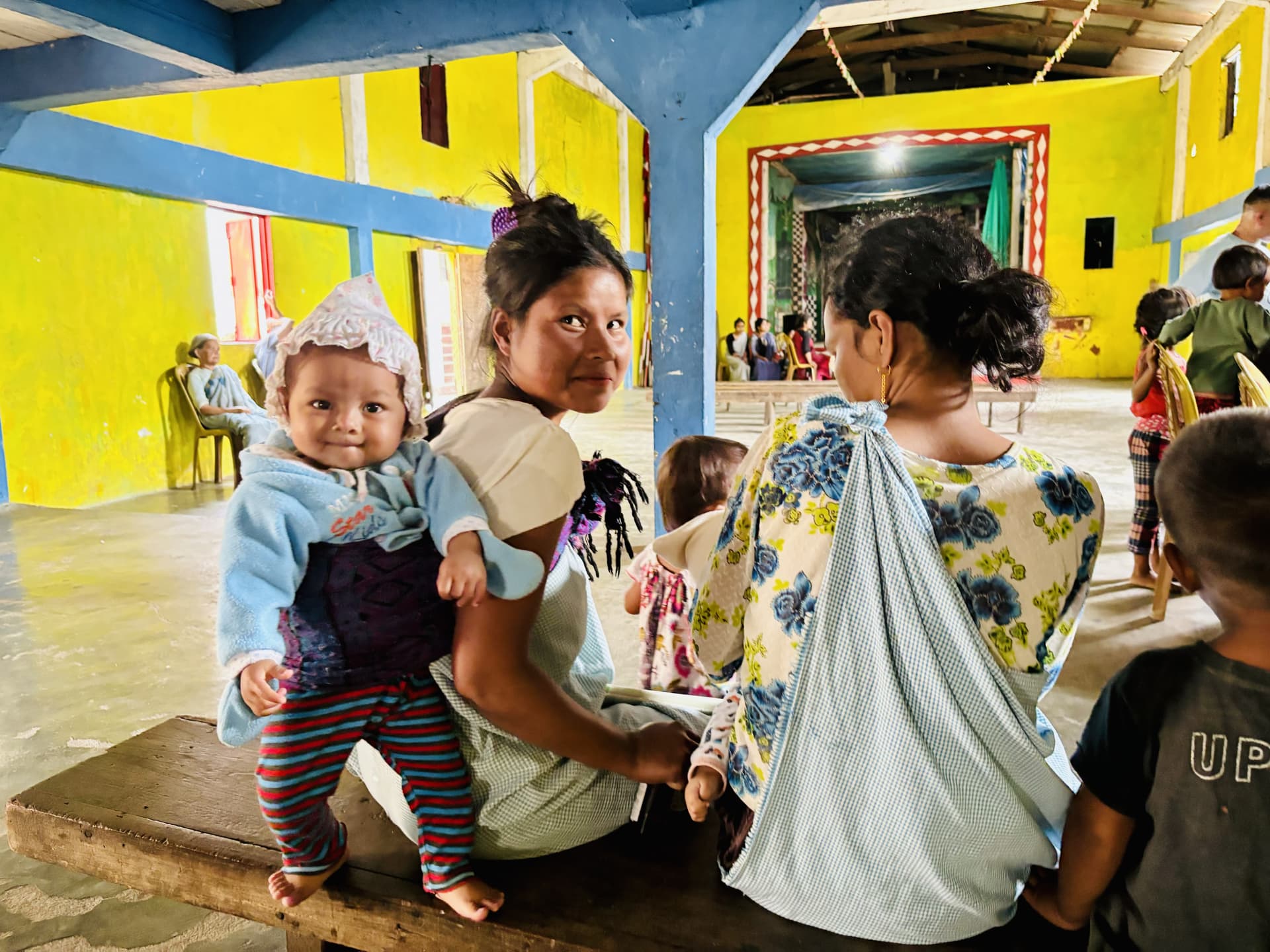
Mothers catch up after getting their babies immunized. Health outreach clinics are a lifeline in for Kenmynsaw residents, particularly from May to October, when ceaseless rain isolate them for weeks (Photo: Sanchita Sharma / © WHO India)
“Apart from maternal and child services, including vaccinations, the primary complaints are infections, gastrointestinal problems, and increasingly, noncommunicable diseases (NCDs) like high blood pressure,” Ms B. Lyngdow, lady health assistant from Mawsynram CHC. The health team also addresses specific local health concerns such as addiction to areca-nut, a carcinogen, which is widely cultivated and consumed.
Ms M. Thianghun Langpen, 35, is a mother of six children, with the oldest just over ten years old and the youngest 22 months old. All her children were delivered at home by a traditional birth attendant. Despite this, Ms Langpen ensures that her family receives regular routine check-ups at the health outreach clinic. Institutional deliveries in the East Khasi Hills district are low at 63.4%, compared to the national average of 88.6%, according to the National Family Heath Survey-5 (2019-2020), but the number of people seeking public health services is steadily increasing.
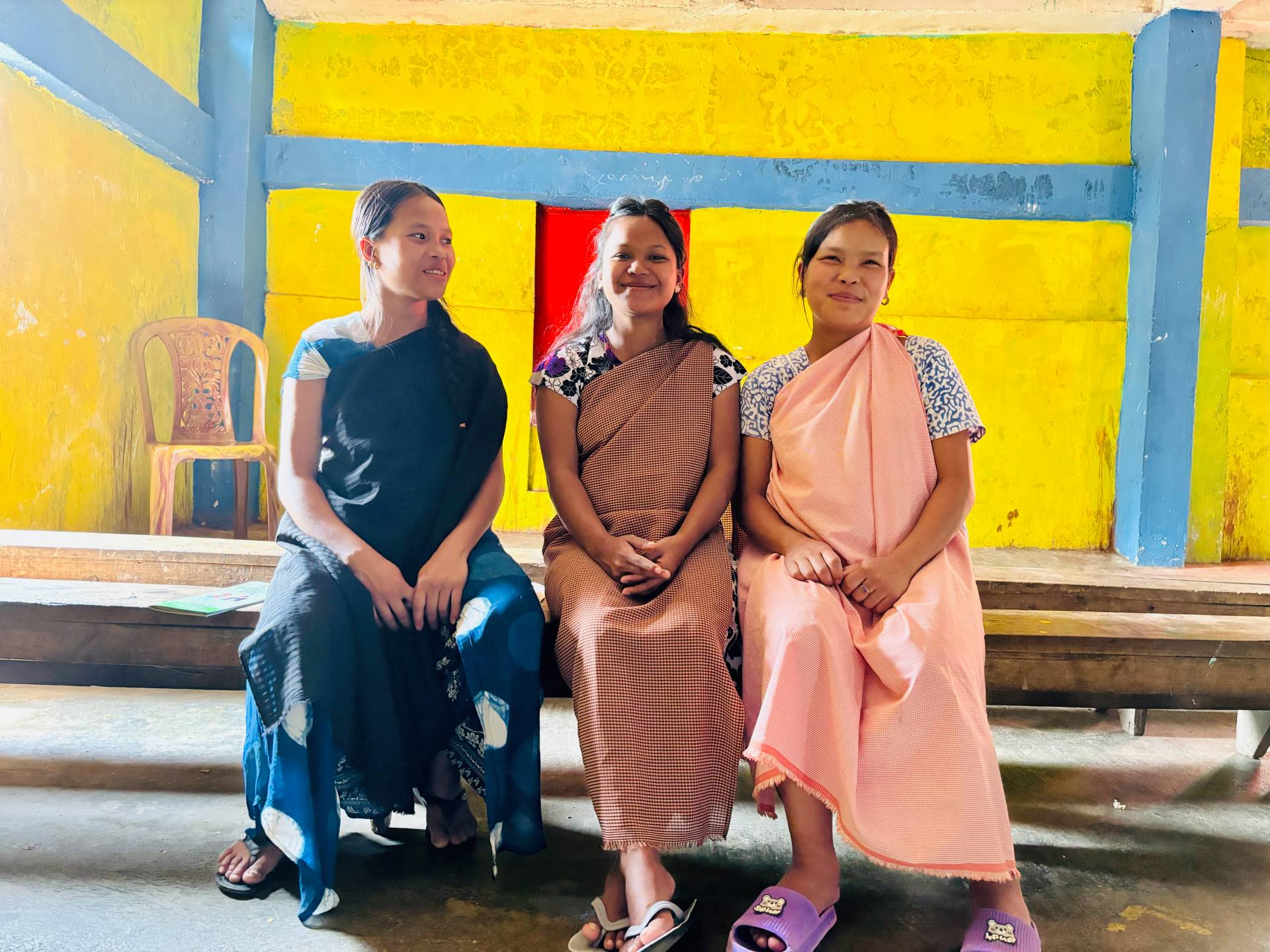
Pregnant women catch up after their health check-up at the outreach clinic (Photo: Sanchita Sharma / © WHO India)
Ms Langpen appreciates the convenience and comprehensive care provided at the health outreach clinic. “Here, I get everything for the whole family in one place, including medicine. It saves me a trip to the dispensary,” she explains. During her visit, she gets her children immunized and consults with the auxiliary nurse midwife about her symptoms of tiredness. The nurse checks her blood pressure and blood glucose levels before referring her to the doctor for further examination.
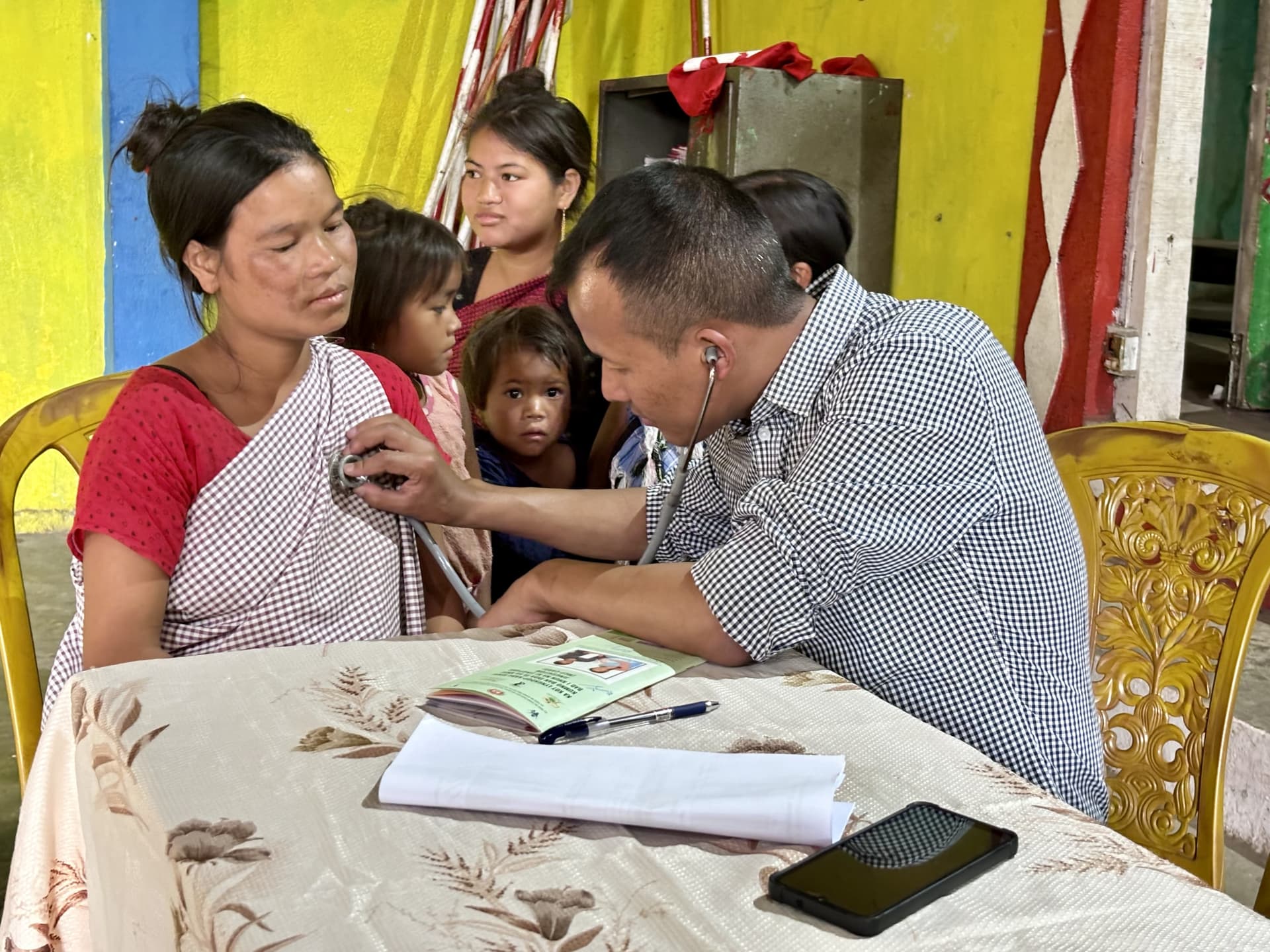
Dr R. Suchiang, medical officer, Mawsynram Community Health Centre, conducing a routine checkup of Ms Thianghun Langpen, 35 (Photo: Sanchita Sharma / © WHO India)
In January 2024, Kenmynsaw and four surrounding villages experienced a measles-rubella (MR) outbreak, affecting a combined population of 3625. “This cluster is a high priority area for immunization. Of the 66 suspected cases, 59 were unvaccinated. The state department launched a comprehensive outbreak response, including giving additional MR doses to all children in February and ongoing surveillance,” Dr Suchiang.
The World Health Organization’s National Public Health Support Network (NPSN) played a vital role in the outbreak response in Kenmynsaw and surrounding villages by providing essential technical and surveillance support. NPSN routinely provides technical and monitoring assistance to the Government of Meghalaya, particularly focusing on enhancing immunization services in hard-to-reach areas. This support is critical for ensuring effective implementation and monitoring of routine immunization programmes and immunization drives, such as COVID-19 vaccination and MR vaccination.
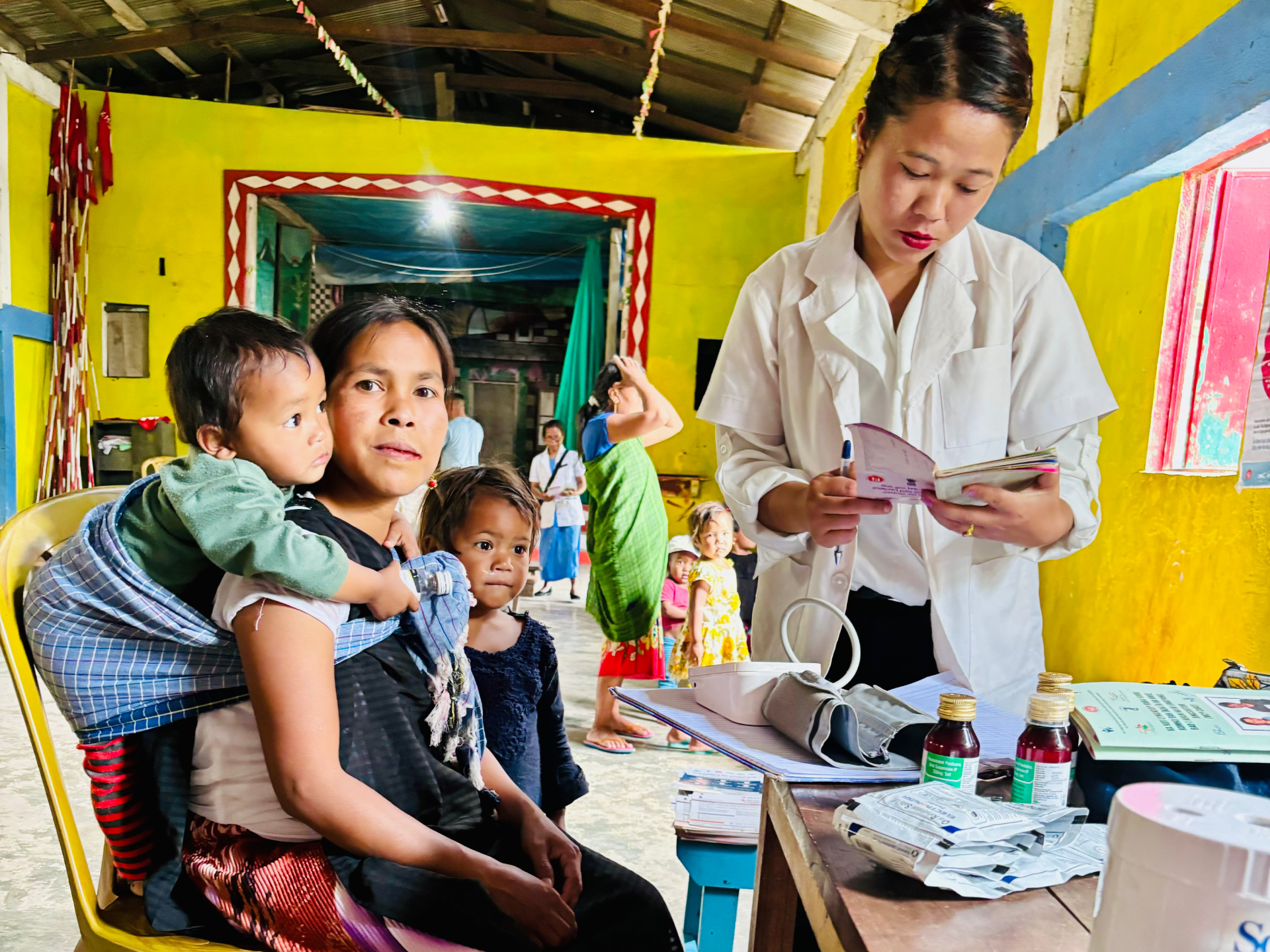
An auxiliary nurse midwife checking a child’s the immunization card at an outreach health clinic in Kenmynsaw village (Photo: Sanchita Sharma / © WHO India)
Under the Government of India’s Universal Immunization Programme (UIP), nearly 2.67 crore (26.7 million) children and 2.9 crore (29 million) pregnant women are immunized free of cost annually against 12 vaccine-preventable diseases. The UIP is one of the largest health initiatives in the world, aimed at reducing child mortality and preventing diseases through widespread immunization.
